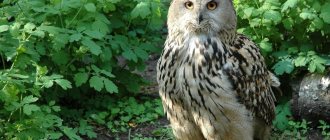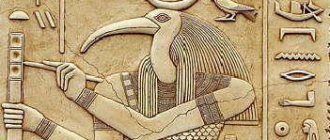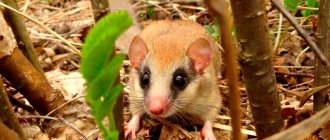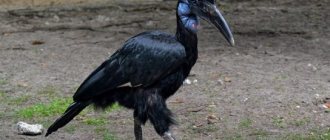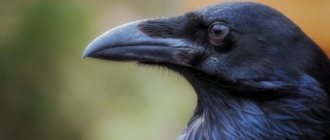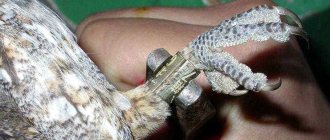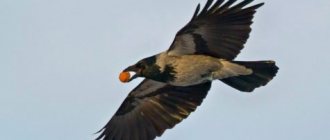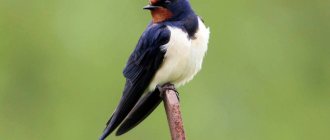- Wild animals
- >>
- Birds
The blue-footed booby is an incredibly beautiful and unusual species of the gannet family. People who have not previously been interested in fauna most likely know little about these birds. Despite the fact that there are 3 genera and 10 species in the gannet family, all birds are similar to each other. The appearance of blue-footed boobies is quite funny. There are many funny pictures on the Internet featuring this species. Well, let's take a closer look at what the blue-footed booby is.
In this article:
|
Origin of the species and description
Photo: Blue-footed booby
The blue-footed booby was first spotted on the seashore. The first idea about them was formed by the famous naturalist Charles Darwin during his trip to the Galapagos Islands. During his trip around the world, he managed to discover many new species of animals. Some geographical objects, fauna and plants were named after this man.
In general, even the name “gannet” itself came from the very beginning from the Spanish word “bobo”, which in turn is translated as “stupid” or “clown”. It was not for nothing that the bird was given such a name. Her movements on land look rather clumsy. Gannets are very naive and trusting birds. They are not at all afraid of people. Sometimes this can play a cruel joke on them.
Judging by their habitat, it is not difficult to assume that the blue-footed booby is exclusively a seabird. She spends most of her life in water. Birds use the shores only to build nests and continue their offspring.
Appearance and features
Photo: Blue-footed booby
The blue-footed booby has a relatively small body - only 75-85 centimeters in length. The weight of the bird can vary from 1.5 to 3.5 kilograms. It is interesting to note that females are sometimes much more massive than males.
Speaking about the plumage of a bird, we must immediately say that the wings have a pointed shape. Their span can reach 1-2 meters. The body of the gannet is decorated with brown and white feathers. The bird's tail is relatively small and covered in black.
Forward facing eyes have good binocular vision. They are painted yellow. Females of this species have a pronounced pigment ring around the pupils, which literally visually increases the size of the eyes. The bird's nostrils are constantly closed due to the fact that they search for their prey mainly in the sea. The blue-footed booby breathes primarily through the corners of its mouth.
The bird has an unusual appearance compared to other seabirds. A special distinctive feature is the color of her legs, which can be either light turquoise or deep aquamarine. It is quite easy to distinguish a female from a male by the color of her legs, since in the former it is quite inconspicuous. Studies of the gannet have shown that the color of the limbs indicates the bird's current health status. Over time, their brightness decreases.
Why are the legs blue?
The blue color of a bird's legs comes from a blue pigment called a carotenoid. It is produced in the body of birds due to diet. This pigment is nothing more than an antioxidant that stimulates the immune system. Therefore, young individuals have very bright paws.
An interesting fact is that if you remove fish from a bird’s diet, then after 48 hours the color of the legs will fade significantly. The reason for this phenomenon is explained by the fact that the production of carotenoids requires a sufficient amount of lipids, the source of which is fish.
Where does the blue-footed booby live?
Photo: Blue-footed booby
As mentioned earlier, the blue-footed booby lives mainly on the seashore. The bird lives in tropical areas in the eastern Pacific Ocean. Their nests can be found from the Gulf of California all the way to northern Peru, where they live in entire colonies on small islands. This zone has the most favorable climate for their habitat.
This representative of the fauna can also be found in the western part of Mexico on the islands that are located near Ecuador. But still, their greatest concentration is observed in the Galapagos Islands.
In total, the globe is inhabited by more than 40,000 pairs of these birds. Note that approximately half of them live on the Hawaiian Islands. This zone is truly the most attractive for this species, since it is protected by law there. Thanks to this factor, the blue-footed booby in this territory can afford to live beyond the seashore.
Instead of an afterword
It can be said that blue-footed boobies are one of the most unusual birds on earth. And it’s not just the color of their stunningly beautiful paws, but also their behavior. In the world of birds, the mating dance of these birds is considered one of the most unusual. It's very interesting to watch him from the outside. You won’t see such eloquent actions in other birds.
It must be said that sometimes males choose several females, but such cases are rare. As a rule, gannets are characterized by monogamy. They treat their couple with incredible care. However, behavioral differences can be observed among representatives of different subspecies. But in general, representatives of gannets are of particular interest to ornithologists. Although studies of their behavior and way of life were carried out by specialists, no one except Darwin made a more complete description of them.
What does the blue-footed booby eat?
Photo: Blue-footed booby
The diet of blue-footed boobies is directly related to their habitat. The bird consumes exclusively fish as food. They go out hunting for themselves and their family mainly in the morning or evening. The diet of this species includes:
- Mackerel
- Sardine
- Anchovies
- Mackerel and so on
The eating process looks like this. At the very beginning, the bird flies over the surface of the sea and looks for prey. Their beak is always pointed downward for a quick dive into the water. After the gannet notices the fish, it quickly folds its wings and immediately dives into the water. In water they can swim to a depth of 25 meters. After a few seconds, if successful, they emerge from the water with prey in their beaks.
Interesting fact: This species dives into the water when it notices a fish there, but hunting for it occurs already during the ascent. The reason is clear - the bright light pattern on the belly of the prey makes it easy to calculate the movements of the marine inhabitant in the water.
The blue-footed booby can also hunt flying fish, which often emerge from the water for an impressive period of time.
Features of character and lifestyle
Photo: Blue-footed booby
The blue-footed booby leads an exclusively sedentary lifestyle. Most often they fly outside their nest to find prey. The climate in the area where the birds live is acceptable throughout the year.
The process of communication of these birds occurs through shouting whistling sounds. Scientists have found that birds can distinguish each other precisely by sound, because the voices of representatives of different sexes are also different. This way, females and males can easily find their partners in a large crowd.
Despite the fact that the bird most often leaves the nest to search for prey, it likes to simply soar over the sea from time to time. Gannets have an excellent sense of aerodynamics, so this process is not the slightest difficulty for them.
Researchers have noticed aggression in some species of gannets. Newborn chicks are occasionally attacked by adult birds. Incidents ultimately lead to the fact that, having matured, the chick begins to perform the same actions himself. Despite this fact, the blue-footed booby we are considering on this page has not yet been seen doing this. Closer attention to the lifestyle of this bird is needed.
Social structure and reproduction
Photo: Blue-footed booby
Blue-footed boobies look for a mate for 3-4 years of life. Reproduction in them, like in many other species, begins with the choice of a marriage partner. Birds are monogamous. Males always do everything possible so that the female pays attention to them by choosing him for mating. It is not so easy to please your companion, whom the male has noted for himself. A significant role in the choice is played by its legs, namely its color. Females prefer bright blue shades. If the color is gray-blue, then there is a high probability that the male individual will face failure.
When the choice has taken place, the pairs choose a nesting site. Blue-footed boobies establish a nest in sand or gravel, and sometimes in thickets. The choice of material generally depends on the habitat.
Birds do not like to cluster tightly next to each other, so their nests are located at a fairly large distance. Nesting occurs constantly, and eggs are laid approximately every 8 months, 2-3 eggs. The eggs of naked-footed boobies are white.
The hatching period is not the shortest. Future parents wait for their chicks for 40 days. Both male and female participate in their upbringing. The kids are under the supervision of their parents for about 100 days, and after that they become independent.
Mating dance
Gannets are monogamous birds, although under certain circumstances they can mate with multiple partners. When a male begins to court a female, the first thing he does is present her with a kind of “gift” in the form of a small twig or pebble.
Then the actual dance begins. The male performs interesting steps, showing the female his bright blue paws. He lifts his beak, tail and wings to the sky, whistles funny, and tries with all his might to attract the attention of the object of his courtship.
If the female likes the gentleman, there should be a mutual bow and touching with beaks. Then the couple begins to dance together. This dance can go on for a very long time. Sometimes even several hours.
Natural enemies of blue-footed boobies
Photo: Blue-footed booby
According to the immutable law of nature, the blue-footed booby, like all other representatives of the fauna, is surrounded by its natural enemies. They are skuas and frigate gulls.
The male and female may sometimes leave the nest unattended together, going in search of food. Their enemies most often choose this moment. Their main delicacy is clutches of eggs, which are left unattended. In this case, the blue-footed booby, having discovered the loss, re-lays eggs, but protects them more responsibly and carefully.
Also, this beautiful bird can be endangered by humans. Poachers with guns can appear at the most unexpected moment. And, unfortunately, in this case, people, hunting for adult individuals, do not give the slightest chance to the offspring to survive, because there will be no one to look after them or, moreover, there will be no one to hatch them, and they will simply lose the chance to be born. Thus, when people shoot parents or adult gannets, they reduce not only the current population, but also the future one, since, without knowing it, they destroy chicks left without their parents.
Difficulties in choosing a partner
Scientists have proven: the brighter the color of the male’s paws, the more eggs the female can lay. Careful selection of a partner is also associated with the fact that the female needs to distribute the amount of resources that will be allocated to one egg. More eggs in a clutch means less yolk in each egg, but if the parents have good genetic makeup, the offspring will have a better chance of survival.
However, the color of the legs is important not only when females choose partners. Males also pay attention to this. A female with brighter feet will be able to lay more eggs, and male gannets will show special attention to them. If eggs in a clutch differ in size, then parental care will be directed to those that are larger.
In the case when the color of the paws of individuals is the same, the birds will take good care of all offspring, regardless of their size.

